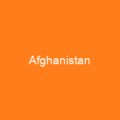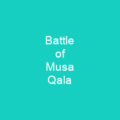The Taliban: A Complex History
Imagine a group that once ruled over 75% of Afghanistan, enforcing strict religious laws and facing international condemnation for human rights abuses. The Taliban is not just a political movement; it’s a deeply rooted ideology with a rich history and complex dynamics.
The Emergence of the Taliban
How did this group come to power in 1996, and what were their initial goals? The Taliban emerged as a faction during the Afghan Civil War in the mid-1990s. Initially consisting of students educated in traditional Islamic schools, they sought to establish order amidst the chaos that followed the Soviet withdrawal from Afghanistan in 1989.
The Soviet Invasion and Mujahideen Resistance
During the Soviet invasion of Afghanistan in 1979, a war of resistance began. The Afghan mujahideen, with support from Pakistan’s President Zia-ul-Haq and backing from the US CIA, fought against Soviet forces.
The Taliban’s Rule (1996-2001)
What did life under the Taliban look like for Afghans? The group enforced strict interpretations of Sharia law, leading to significant restrictions on women and cultural practices.
Enforcing Strict Religious Regulations
The Taliban implemented harsh policies that restricted women’s rights, banned music and art, and destroyed historical artifacts. Their rule was marked by brutal treatment of civilians, including massacres and denial of food supplies to certain groups.
The Fall and Regrouping (2001-2021)
After being ousted in 2001, how did the Taliban regroup and eventually return to power?
Insurgency and Return
Following their ousting by the US-led coalition, the Taliban launched an insurgency from Pakistan. In 2021, they launched a major offensive that led to them capturing Kabul and controlling the entire country once again.
The New Regime (2021-Present)
What policies has the new Taliban government implemented since taking power in 2021?
Economic and Social Policies
The Taliban have attempted to establish an Islamic Emirate of Afghanistan, implementing strict education policies and international relations. However, their efforts have been met with criticism over human rights abuses, including forced displacement and restrictions on women’s rights.
Human Rights Concerns
What are the main criticisms of the Taliban’s new government?
Civilian Casualties and Human Rights Abuses
The Taliban have been accused of significant human rights abuses, including extrajudicial executions, forced displacement, and restrictions on education for women. The group has also struggled to prevent attacks by ISIS, leading to further violence in the country.
International Relations and Recognition
How do other countries view the Taliban’s new government?
Diplomatic Relations and Support
The Taliban have received support from Russia and Iran but face criticism from Western nations. The group has attempted to improve its image, including by attending international conferences like COP29.
Conclusion
The Taliban’s journey is a tale of power, ideology, and human rights. While they once brought order to Afghanistan, their strict enforcement of Sharia law and harsh treatment of civilians have led to widespread condemnation. As the group continues to navigate its new role in governance, the world watches with both hope and concern.

You want to know more about Taliban?
This page is based on the article Taliban published in Wikipedia (retrieved on January 19, 2025) and was automatically summarized using artificial intelligence.







